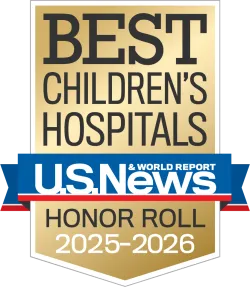Breadcrumb
- Home
- Conditions & Treatments
- Raynaud Phenomenon
What is Raynaud’s phenomenon?
Named for the French medical student who first described it in 1862, Raynaud’s (pronounced “ray-nodes”) phenomenon is a rare condition in which blood vessels react in an exaggerated way (called a vasospasm) to cold or emotional stress. You may also see the terms “Raynaud’s disease” and “Raynaud’s syndrome,” but they’re misleading. Raynaud’s isn’t a disease: It’s a variant of the body’s natural way of keeping its temperature under control.
When we’re hot, we get flushed as small blood vessels under the skin widen (dilate) to bring blood close to the surface and let its warmth escape. But when we’re cold, those blood vessels narrow (constrict) to preserve warmth inside for our brain, heart and other vital organs.
In Raynaud’s, blood vessels going to certain parts of the body — often the fingers — overreact to cold or even a brief drop in temperature, like walking into an air-conditioned room. The vessels clamp down in what’s called a vasospastic attack, blocking the blood flow and causing the skin in the affected area to:
- Turn blue (called cyanosis), as the blood’s oxygen level drops
- Turn white (called pallor), as the blood flow stops
- Turn red (called rubor), as the vessels reopen and flood the tissues with blood
Not everyone with Raynaud’s has all three color changes, or in the same order. Which body parts are affected and how long the attacks last also varies from person to person. All patients do fall into one of two categories of Raynaud’s.
- Primary Raynaud’s: If your child has primary Raynaud’s, his blood vessels are healthy. They overreact simply because they’re more sensitive, or “twitchy,” than most people’s.
- Secondary Raynaud’s: If your child has this rarer and more serious form of Raynaud’s, his blood vessels overreact because they have been damaged by an underlying disease or condition.
Who is at risk for Raynaud’s phenomenon?
According to the Arthritis Foundation, 4 to 15 percent of the people in the United States have Raynaud’s phenomenon. In that group, more than 80 percent have primary Raynaud’s (largely benign), while the rest have secondary Raynaud’s (sometimes serious). And just as the severity of the two types of Raynaud’s is different, so are their risk factors.
Risk factors for Primary Raynaud’s
- Gender: About 80 percent of those with primary Raynaud’s are female.
- Body type: Raynaud’s is most often seen in slender girls and women.
- Age: Primary Raynaud’s usually develops between the ages of 12 and 30.
- Family history: About 25 percent of those with primary Raynaud’s have a family history of the condition.
- Other factors: Certain foods and medications can exaggerate vasospasm, including caffeine and drugs often used for attention-deficit hyperactivity disorder (ADHD), such as Ritalin.
Risk factors for Secondary Raynaud’s
- Age: Secondary Raynaud’s is more likely to occur in people older than 30.
- Disease: Secondary Raynaud's is often seen in connection with scleroderma, lupus, and other illnesses that damage blood vessels or the nerves that control them.
- Other factors: Trauma to the hands or feet, like frostbite.
Symptoms & Causes
What are the symptoms of Raynaud’s phenomenon?
Symptoms occur only when the blood vessels are actually in vasospasm — clamping down — in response to cold or emotional stress. Here are the telltales of a Raynaud’s attack:
- Changes in skin color occur as the blood vessels seal off and cause the affected areas (usually the fingers and/or toes) to turn blue or white, or first one and then the other. The skin may then become red and puffy as the vessels reopen. The discoloration can be splotchy or solid, and it usually affects both hands and/or both feet at the same time.
- Coldness, numbness, and/or clumsiness happens in the blue or white phase, as if the affected areas have “gone to sleep.”
- Warmth, tingling, and/or throbbing happens in the red, or “rewarming,” phase. This can feel like the pins-and-needles sensation of “waking up” a limb that’s fallen asleep. It can be uncomfortable and occasionally painful.
It usually takes about 15 to 20 minutes for these symptoms to resolve themselves after whatever triggered the attack is gone (for example, after you’ve moved your child to a warmer area or helped him calm down).
In secondary Raynaud’s, the attacks can last longer and may have more severe symptoms, such as pain in the affected area, lingering weakness or numbness, and skin ulcers or dead tissue (gangrene).
What causes Raynaud’s phenomenon?
For children with primary Raynaud’s, we don’t know what causes their blood vessels to react in such a vigorous way to cold and emotional stress.
However, there are concrete causes for secondary Raynaud’s, and in children it’s most often an underlying autoimmune disease. The illnesses we tend to see with secondary Raynaud’s are:
- Scleroderma, which leads to the hardening and scarring of the skin and other body tissues (about 90 percent of those with scleroderma also have Raynaud’s)
- Systemic lupus erythematosus (SLE, or simply lupus), which can cause inflammation and damage in many parts of the body, especially the heart, lungs, kidneys and brain (about a third of those with lupus also have Raynaud’s)
- Mixed connective tissue disease, an “overlap” disease that has features of scleroderma, lupus, polymyositis, and sometimes rheumatoid arthritis
- Vasculitis, which causes inflammation of the blood vessels
Diseases like arteriosclerosis and hypertension can also damage the blood vessels and cause secondary Raynaud’s, though almost always in adults. Other potential causes of secondary Raynaud’s include:
- Medications: Certain kinds of drugs have been linked to Raynaud’s, such as beta blockers (used to treat high blood pressure), migraine prescriptions with ergotamine, medications with estrogen, drugs containing caffeine (such as Excedrin), medications used for ADHD, and some over-the-counter decongestants.
- Injury to the hands and feet: Frostbite is a notable culprit in this category, but things like repetitive trauma — seen mainly in adults who work with vibrating tools, like drills — can also trigger Raynaud’s.
When should you see a doctor?
If your child seems extremely sensitive to cold or emotional stress and you think he may have Raynaud’s phenomenon, it’s generally OK to decide to wait until his next regular check-up. Raynaud’s isn’t a disease and for the vast majority of kids, the diagnosis just means they’ll have to take extra care to stay warm.
But you should make an appointment to bring your child in sooner if his symptoms are accompanied by warning signs of a more serious illness. These include:
- Skin sores
- Substantial pain
- Marked asymmetry (the fingers of one hand change color but not the other)
- Rashes or other changes in the skin
- Fever
- Chest pain
- Bad heartburn
- Weakness
Here are some questions you may want to ask. It’s often helpful to jot them down ahead of time so that you can leave the appointment feeling that you have the information you need.
- Is this primary or secondary Raynaud’s?
- What is the cause of my child’s Raynaud’s?
- What further tests does my child need?
- When might medications be required?
- What are the side effects of those medications?
- What is the outlook for my child?
- What can I do to help minimize the impact of my child’s Raynaud’s?
Helpful medical terms
- Cyanosis: A bluish color of the skin caused by insufficient oxygen in the blood; one of three color changes associated with Raynaud’s phenomenon.
- Digit: A finger or toe. The small blood vessels that feed the fingers and toes are called digital arteries.
- Extremities: The limbs of the body, most commonly referring to the hands and feet.
- Ischemia: A lack of blood flow in a body part.
- Necrosis: The death of body tissue. Gangrene is a kind of necrosis.
- Pallor: A whitening of the skin caused by lack of blood flow; one of three color changes associated with Raynaud’s.
- Rubor: A reddish color of the skin caused by increased blood flow; one of three color changes associated with Raynaud’s.
- Triphasic: Having three parts. If the skin changes to blue, white and then red during a Raynaud’s attack, it’s called a triphasic reaction. If only two colors occur, it’s called a biphasic reaction.
- Vasoconstriction: A narrowing of blood vessels caused by the tightening of muscles in their walls.
- Vasodilation: A widening of blood vessels caused by the relaxation of muscles in their walls.
- Vasospasm: Sudden, temporary vasoconstriction — literally, a spasm in the blood vessels.
Diagnosis & Treatments
How do we diagnose Raynaud’s phenomenon?
Primary Raynaud’s phenomenon is often diagnosed by general practitioners. Your child’s doctor will ask about his medical history and symptoms and do a physical exam to help rule out more common ailments like chilblains (cold-induced sores at the tips of digits) or a pinched nerve.
It’s fairly simple to determine if someone has Raynaud’s phenomenon, but it’s tricky to sort out primary from secondary (whose underlying cause can be difficult to spot).
If your pediatrician is concerned your child may have secondary Raynaud’s, she may refer him to a rheumatologist (a specialist in treating immune-mediated diseases of the joints, blood vessels, and muscles). Rheumatologists are experts on the autoimmune diseases that cause secondary Raynaud’s, like scleroderma and lupus.
Tests to determine whether your child’s Raynaud’s is primary or secondary include:
- Nailfold capillaroscopy: An in-office test where the doctor uses a microscope or other magnifying device to look at the capillaries (tiny blood vessels) at the base of your child’s fingernail. Enlarged or irregular capillaries can be a sign of certain autoimmune diseases.
- Antinuclear antibody test (ANA): A lab test that checks your child’s blood for the presence of antinuclear antibodies, which are a kind of protein that attacks the body’s own cells. Most autoimmune diseases that occur with secondary Raynaud’s are ANA positive, but many patients with a positive ANA are healthy and will remain so.
- Erythrocyte sedimentation rate (ESR or sed rate): A lab test that measures how quickly red blood cells fall to the bottom of a test tube. If the cells to clump together and fall more rapidly than normal, it can signal there is inflammation somewhere in your child’s body — which is sometimes a marker of autoimmune disease.
After we complete all necessary tests, our experts meet to review and discuss what they have learned about your child's condition. Then we will meet with you and your family to discuss the results and outline the best next steps.
How do we treat Raynaud’s phenomenon?
There is no cure for Raynaud's phenomenon — something that can be difficult for a parent to hear. But the good news is that in most cases Raynaud's doesn't do any harm, and shouldn't cause undue concern for you or your child. When symptoms become bothersome, simple lifestyle changes go a long way in helping children with Raynaud's manage their condition. These include:
- Dress warmly. In cold weather, your child should wear hats, mittens or gloves, and thick socks, but also keep his whole body warm with layers of loose-fitting clothing. In warm weather, he should keep a sweater or jacket handy at all times to guard against chilly, air-conditioned spaces.
- Avoid touching cold items. For instance, your child might want to use insulated drinking glasses for cold beverages, or keep a pair of gloves near the refrigerator to wear when reaching into the freezer.
- Control stress. You and your child can work together to figure out what situations cause him to feel emotional stress and try to avoid them. Learning relaxation techniques like deep breathing exercises may also be helpful.
- Stay away from caffeine … and don't smoke! Caffeine (found in things like soda, coffee, and chocolate) and nicotine (cigarettes) can make a Raynaud's attack worse because they constrict blood vessels. So do some common medications like decongestants and ADHD medications — your child's doctor will help you sort out which ones to avoid.
- Exercise regularly. Not only is this great for overall health, it also boosts blood flow and reduces stress.
In addition, your child can take steps to control an attack once it starts.
- Get to a warmer area right away.
- Wiggle fingers and toes and make wide arm circles ("windmilling") to increase blood circulation.
- Run warm — but not hot — water over the hands and feet.
For children with secondary Raynaud's — the rarer, more serious form — or for children with primary Raynaud's that can't be controlled in other ways, medical treatments can help rein in the frequency and severity of their attacks and prevent tissue damage. Some types of drugs you might hear your child's doctor mention are:
- Calcium channel blockers, often prescribed for high blood pressure, relax and widen blood vessels by preventing calcium from entering the muscles of the vessel walls. An example is nifedipine (brand names include Procardia and Adalat).
- Alpha blockers, another kind of blood pressure medication, keep a hormone called norepinephrine from tightening the muscles in the walls of smaller arteries and veins. Example: prazosin (Minipress).
- Endothelin-1 inhibitors, yet another blood pressure medication, works by stopping the action of endothelin, a protein that causes blood vessels to narrow. Example: bosetan (Tracleer).
- Phosphodiesterase inhibitors, a type of drug commonly prescribed for erectile dysfunction, help relax blood vessel walls by blocking certain enzymes. Example: sildenafil (Viagra).
- Selective serotonin reuptake inhibitors (SSRIs), best known as antidepressants, have been shown to alleviate the symptoms of Raynaud's. Example: fluoxetine (Prozac).
Raynaud's patients with extremely severe symptoms may also need surgery or injections to block the nerves that control their blood vessels. But these procedures are very rare.
Are there complications from Raynaud's phenomenon?
Most children with Raynaud’s phenomenon have no complications. While they may not outgrow their condition, it likely won’t get any worse and they’ll live a normal life.
For the rare few with secondary Raynaud’s, there is a risk of tissue damage if their condition is severe and their attacks tend to last a long time. Blood flow to the affected area may become permanently diminished, causing ulcers or gangrene — ailments that can be very difficult to treat.
How Boston Children’s Hospital approaches Raynaud’s phenomenon
While pediatricians can diagnose Raynaud’s, the role of the rheumatologist is to detect any potential underlying cause — such as scleroderma or lupus — and then put together a comprehensive treatment plan. At Children’s, our rheumatologists are well prepared to meet this challenge:
- Working in one of the largest rheumatology programs in the United States, we treat more than 4,000 outpatients and almost 1,000 inpatients every year.
- We see children from across the country and around the world for expert consultation and second opinions on difficult or complex inflammatory conditions.
- We work closely with other Children’s specialists, such as dermatologists and radiologists, to diagnose and manage complex multisystem diseases.
Reviewed by Peter Nigrovic, MD — © Boston Children’s Hospital, 2010
Frequently Asked Questions
By and large, Raynaud’s is more a nuisance than a cause for concern. But there is a risk of long-term tissue damage and other complications with secondary Raynaud’s, the rare form caused by an underlying disease.
This condition tends not to go away, but it also tends not to get any worse. Most people with primary Raynaud’s can manage their symptoms with minor lifestyle changes and don’t need medication.
Only rarely, in truly severe cases. By contrast, children with primary Raynaud’s may feel cold, stiffness and a “pins-and-needles” sensation in their hands or feet — but some may not even sense they’re having an attack at all or notice it only by sight.
Exposure to extreme cold causes frostbite, in which there is actual tissue damage. A Raynaud’s attack can occur in fairly mild temperatures (even around 60 degrees) and doesn’t injure the affected fingers or toes, except in severe cases.
It’s tied into our natural “fight or flight” response. The body reacts to stress the way it would a physical threat, pulling blood away from the skin’s surface and concentrating it in the muscles, brain, heart, lungs — the things you’d really need to fight or flee.
Certain people find help in alternative therapies such as biofeedback, fish oil, dietary supplements, and acupuncture. However, most patients need no therapy or choose to use well-tolerated medications. You can discuss these options with your doctor.
As a parent, you may worry whether there was anything you should’ve done to head off your child’s condition. Yet primary Raynaud’s phenomenon — which, by far, is the type most children have — can’t be prevented. Nor can secondary Raynaud’s, if it is caused by an underlying disease.
But by helping your child avoid cold, reduce stress, and make some simple lifestyle changes, you can help him cut down on the frequency and severity of his Raynaud’s attacks.
Research & Clinical Trials
Our areas of innovation for Raynaud's phenomenon
Studies on pediatric Raynaud’s are rare, with Boston Children’s rheumatologists being among the handful of investigators. Peter Nigrovic, MD, and Robert Sundel, MD, coauthored a study of more than 100 Raynaud’s patients, ranging from infants to age 19, published in the journal Pediatrics. Among the study's findings:
- Primary and secondary Raynaud’s tended to begin around the same age, roughly 12 or 13.
- As with adult patients, the majority of the children referred to rheumatologists (about 70 percent) had the relatively harmless form of the condition, called primary Raynaud’s.
- As with adult patients, antinuclear antibody (ANA) and nailfold capillary tests offered strong indicators of whether a child had secondary Raynaud’s.
Clinical trials
There are many ways in which your child might benefit from Boston Children’s medical research program. Our doctors and scientists have made many breakthrough discoveries about diseases like polio and leukemia, and our ongoing innovative research continues to push the boundaries of the way pediatric medicine is practiced.
It’s possible that your child will be eligible to participate in one of our current clinical trials. Some are designed to evaluate the effectiveness of a particular drug, treatment or therapy on a specific disease; others help doctors to better understand how and why certain conditions occur. At any given time, Boston Children’s has hundreds of clinical trials under way.
And participation in any clinical trial is completely voluntary: We will take care to fully explain all elements of the treatment plan prior to the start of the trial, and you may remove your child from the medical study at any time.
Search the National Institutes of Health's list of clinical trials taking place around the world.





